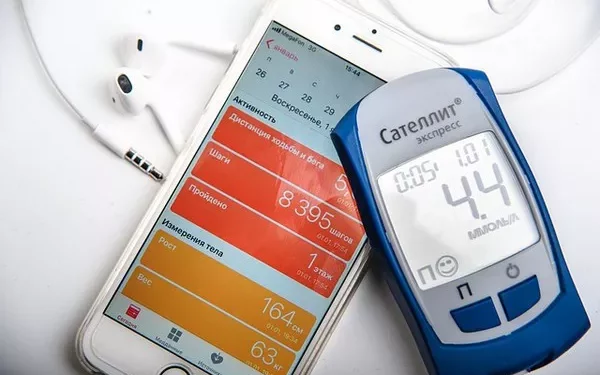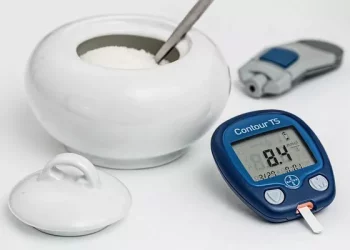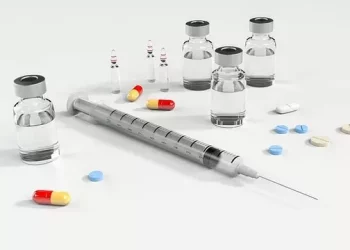Blood sugar, or blood glucose, is a critical component of the body’s metabolic processes. It serves as a primary source of energy for cells and is tightly regulated by various hormones, including insulin. However, when this regulation falters, it can lead to abnormally high or low blood sugar levels, both of which can be dangerous. While we often focus on the dangers of low blood sugar (hypoglycemia) and high blood sugar (hyperglycemia) in managing diabetes, it is important to understand the threshold at which blood sugar levels become life-threatening.
Understanding Blood Sugar Levels
Blood sugar levels fluctuate throughout the day based on factors such as diet, physical activity, stress, and overall health. In individuals without diabetes, blood sugar is typically maintained within a normal range, usually between 70 to 99 mg/dL (3.9 to 5.5 mmol/L) when fasting. After meals, it may rise to 140 mg/dL (7.8 mmol/L), but it quickly returns to normal.
For those with diabetes, however, blood sugar levels can become dysregulated. The body either cannot produce enough insulin (Type 1 diabetes) or is unable to properly use the insulin it produces (Type 2 diabetes). This leads to higher-than-normal blood sugar levels (hyperglycemia) and, in some cases, dangerously high levels that can lead to severe complications.
Hyperglycemia and Lethal Blood Sugar Levels
Hyperglycemia is a common occurrence for individuals with poorly managed diabetes. The condition arises when blood glucose levels are too high. In the early stages, hyperglycemia may not cause obvious symptoms, but as the blood sugar levels continue to rise, the risks to health increase significantly.
The American Diabetes Association (ADA) defines hyperglycemia as blood glucose levels above 180 mg/dL (10 mmol/L). While this level is concerning, it is not necessarily life-threatening on its own. However, if blood sugar levels remain elevated for an extended period, it can lead to severe complications.
The question of what constitutes a lethal blood sugar level depends on various factors, including the individual’s overall health, the duration of the elevated blood sugar, and whether they have other underlying conditions like kidney disease or cardiovascular problems. Generally, blood glucose levels exceeding 600 mg/dL (33.3 mmol/L) are considered potentially life-threatening.
What Happens at Lethal Blood Sugar Levels?
When blood sugar levels become dangerously high, they can lead to a cascade of physiological reactions. One of the most severe consequences is diabetic ketoacidosis (DKA) or hyperosmolar hyperglycemic state (HHS), both of which can be fatal if left untreated.
Diabetic Ketoacidosis (DKA)
DKA is more common in individuals with Type 1 diabetes, although it can also occur in people with Type 2 diabetes under certain circumstances. DKA occurs when the body begins to break down fat as a source of energy due to the lack of insulin. This process produces ketones, which are acidic compounds that accumulate in the bloodstream, leading to a condition called ketosis.
As the level of ketones rises, the blood becomes more acidic, a condition known as acidosis. Symptoms of DKA include nausea, vomiting, abdominal pain, rapid breathing, confusion, and a fruity odor on the breath. If untreated, DKA can lead to coma and death. The onset of DKA typically occurs when blood glucose levels rise above 250 mg/dL (13.9 mmol/L), but it is the combination of high glucose and ketone buildup that makes the condition life-threatening.
Hyperosmolar Hyperglycemic State (HHS)
HHS is more common in individuals with Type 2 diabetes, particularly in older adults. Unlike DKA, HHS is characterized by extremely high blood glucose levels—often exceeding 600 mg/dL (33.3 mmol/L)—without significant ketone production. This occurs when insulin resistance is severe enough to prevent glucose from entering cells, but the body still has enough insulin to prevent the production of ketones.
As blood sugar levels rise, the body attempts to dilute the glucose by excreting excess water in the urine. This results in severe dehydration, which can lead to electrolyte imbalances and organ failure. Symptoms of HHS include extreme thirst, dry mouth, fever, confusion, and hallucinations. If untreated, HHS can lead to coma and death.
Other Factors Influencing Lethal Blood Sugar Levels
While the threshold for lethal blood sugar levels is generally considered to be above 600 mg/dL (33.3 mmol/L), there are other factors that can influence how dangerous elevated blood sugar levels are for an individual. These factors include:
Duration of Elevated Blood Sugar
The longer blood glucose levels remain high, the more damage they can cause to the body. Chronic hyperglycemia, even at moderate levels, can lead to long-term complications such as neuropathy, retinopathy, nephropathy, and cardiovascular disease. These complications can increase the risk of death, even if blood sugar levels are not immediately fatal.
Underlying Health Conditions
Individuals with diabetes often have other health conditions that can exacerbate the effects of high blood sugar. For example, kidney disease, heart disease, and infections can worsen the impact of elevated glucose levels, making the individual more vulnerable to life-threatening complications. Additionally, dehydration resulting from high blood sugar can lead to kidney failure, which further complicates treatment and increases the risk of death.
Age and Comorbidities
Older adults and individuals with multiple comorbidities are at greater risk of experiencing severe complications from high blood sugar. Their bodies may not be as effective at managing extreme blood glucose levels, and they are more likely to experience complications such as stroke, heart attack, or organ failure.
Signs and Symptoms of Lethal Blood Sugar Levels
Recognizing the signs and symptoms of dangerously high blood sugar is crucial for preventing life-threatening complications. While each individual may experience symptoms differently, common signs of severe hyperglycemia include:
Excessive Thirst and Urination: The body tries to eliminate excess glucose through urine, leading to dehydration and frequent urination.
Nausea and Vomiting: Elevated blood sugar can irritate the digestive system, leading to nausea and vomiting.
Fatigue and Weakness: As the body is unable to use glucose effectively, individuals may feel exhausted and weak.
Blurred Vision: High blood sugar can cause fluid shifts in the eyes, leading to blurred vision.
Shortness of Breath: In cases of DKA, individuals may experience rapid and shallow breathing, a result of the body attempting to balance the acidic pH in the blood.
Fruity-Scented Breath: A hallmark of DKA, fruity-smelling breath is caused by the buildup of acetone, a type of ketone.
Confusion or Disorientation: High blood sugar levels can impair cognitive function, leading to confusion, dizziness, and even coma.
Managing Lethal Blood Sugar Levels
Managing blood sugar is essential for preventing potentially fatal complications. Individuals with diabetes need to work closely with their healthcare providers to monitor their blood glucose levels and develop a comprehensive management plan. This plan should include:
Frequent Monitoring of Blood Sugar Levels: Regularly checking blood sugar is critical for detecting dangerous trends and preventing sudden spikes.
Medication Management: Individuals with diabetes often need insulin or oral medications to help regulate their blood sugar levels. Adjusting dosages based on blood sugar readings is important for preventing severe hyperglycemia.
Hydration: Staying hydrated is essential, particularly when blood sugar levels are high, as dehydration can worsen the situation.
Healthy Diet and Exercise: A balanced diet and regular physical activity can help improve insulin sensitivity and maintain blood sugar levels within a safe range.
Emergency Intervention: If blood glucose levels become dangerously high, seeking immediate medical attention is critical. Treatment for DKA or HHS often requires hospitalization, intravenous fluids, insulin therapy, and monitoring of vital signs.
Conclusion
Blood sugar levels that exceed 600 mg/dL (33.3 mmol/L) can be life-threatening, particularly when they lead to complications such as diabetic ketoacidosis or hyperosmolar hyperglycemic state. While the specific lethal threshold can vary depending on individual health factors, it is clear that sustained high blood sugar levels pose significant risks. Early detection, proper management, and timely medical intervention are essential in preventing these life-threatening situations. Individuals with diabetes should work closely with their healthcare providers to ensure their blood sugar levels are carefully managed and kept within a safe range.
Related topics:
What Causes High Glucose Levels in Blood?























